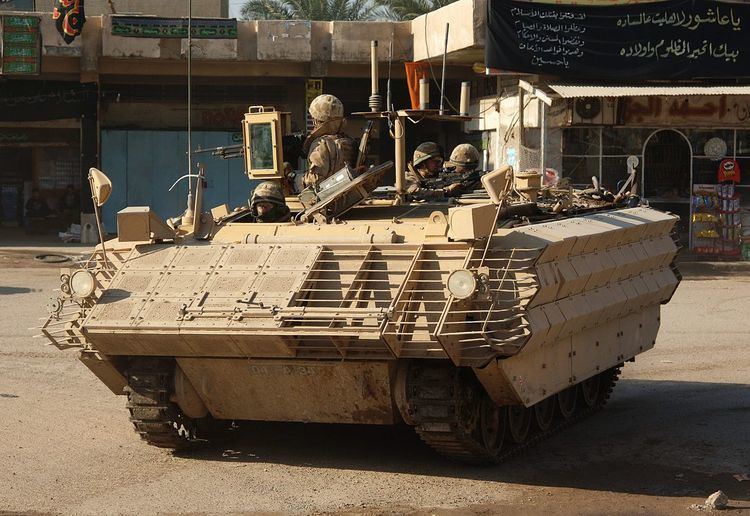Place of origin United Kingdom Length 5.25 m Height 2.28 m | Weight 15.3 t Width 2.8 m Crew 2 minimum | |
 | ||
The FV430 series covers a number of armoured fighting vehicles of the British Army, all built on the same chassis. The most common is the FV432 armoured personnel carrier.
Contents
Although the FV430 series has been in service for a long time, and some of the designs have been replaced in whole or part by other vehicles, such as those of the CVR(T) range or the Warrior, many have been retained and are receiving upgrades in the engine and control gear.
The FV430 chassis is a conventional tracked design with the engine at the front and the driving position to the right. The hatch for the vehicle commander is directly behind the driver's; a pintle mount next to it can take a machine gun. There is a side-hinged door in the rear for loading and unloading, and in most models a large split-hatch round opening in the passenger compartment roof. In common with other such old designs, there are no firing ports for the troops carried - British Army doctrine has always been to dismount from vehicles to fight.
There is a wading screen as standard, and the vehicle has a water speed of about 6 km/h when converted for swimming.
FV430 vehicles, if armed, tend to have a pintle-mounted L7 GPMG. There are two three-barrel smoke dischargers at the front.
Vehicles
British Army nomenclature:
FV430 Mk3 Bulldog
Introduced in December 2006, the Bulldog was designed to meet an urgent operational requirement for extra armoured vehicles for use in counter-insurgency campaigns in Iraq and Afghanistan. It features an applique reactive armour package designed by Israeli company Rafael capable of defeating hollow charge warheads, such as the RPG-7 rockets used by insurgents. A new engine and steering gear provide better mobility and manoevrability. Other features include air conditioning and a gun station fitted with a 7.62mm machine-gun that can be controlled from inside the vehicle. Nine hundred FV430s are expected to be modified in this way and are being deployed in Iraq and Afghanistan alongside the new Mastiff PPV and Pinzgauer High Mobility All-Terrain Vehicle (Vector), relieving some of the pressure on the Warrior fleet. [1]
The modifications, as well as bringing the vehicle's level of protection up to that of the Warrior, give it better cross country performance and a new top speed of 45 mph (72 km/h).
Modifications on the first 50 units were underway between January and October 2006 at the ABRO facility in Dorset by BAE Systems Land Systems at a cost of £85 million. However, these were deployed to Operation Telic in an incomplete state and were brought to completion, along with the rest of the Bulldog fleet during Operation Telic 10, in theatre, in a joint venture between BAE Systems Land Systems and 6 Battalion Royal Electrical and Mechanical Engineers.
